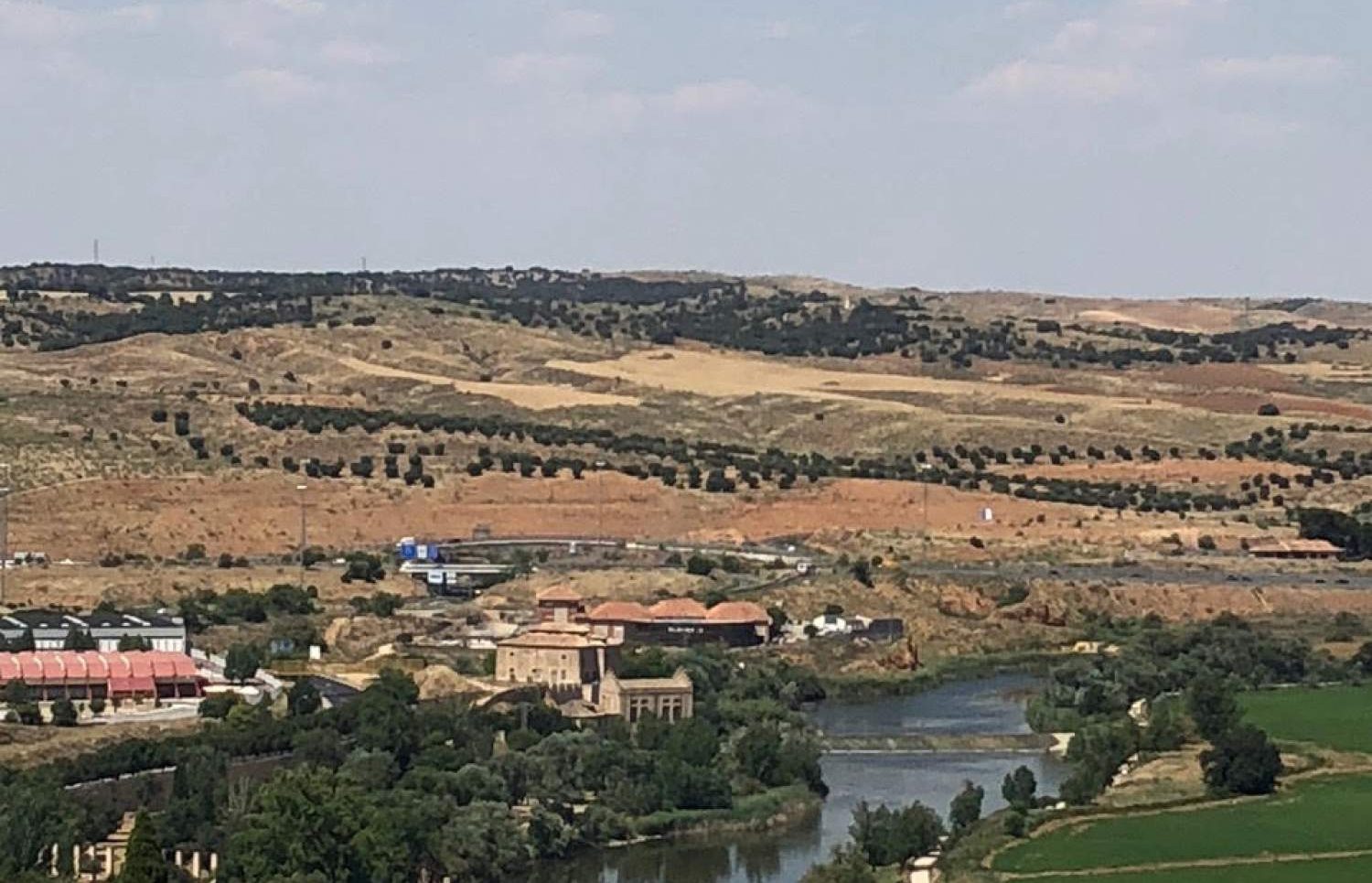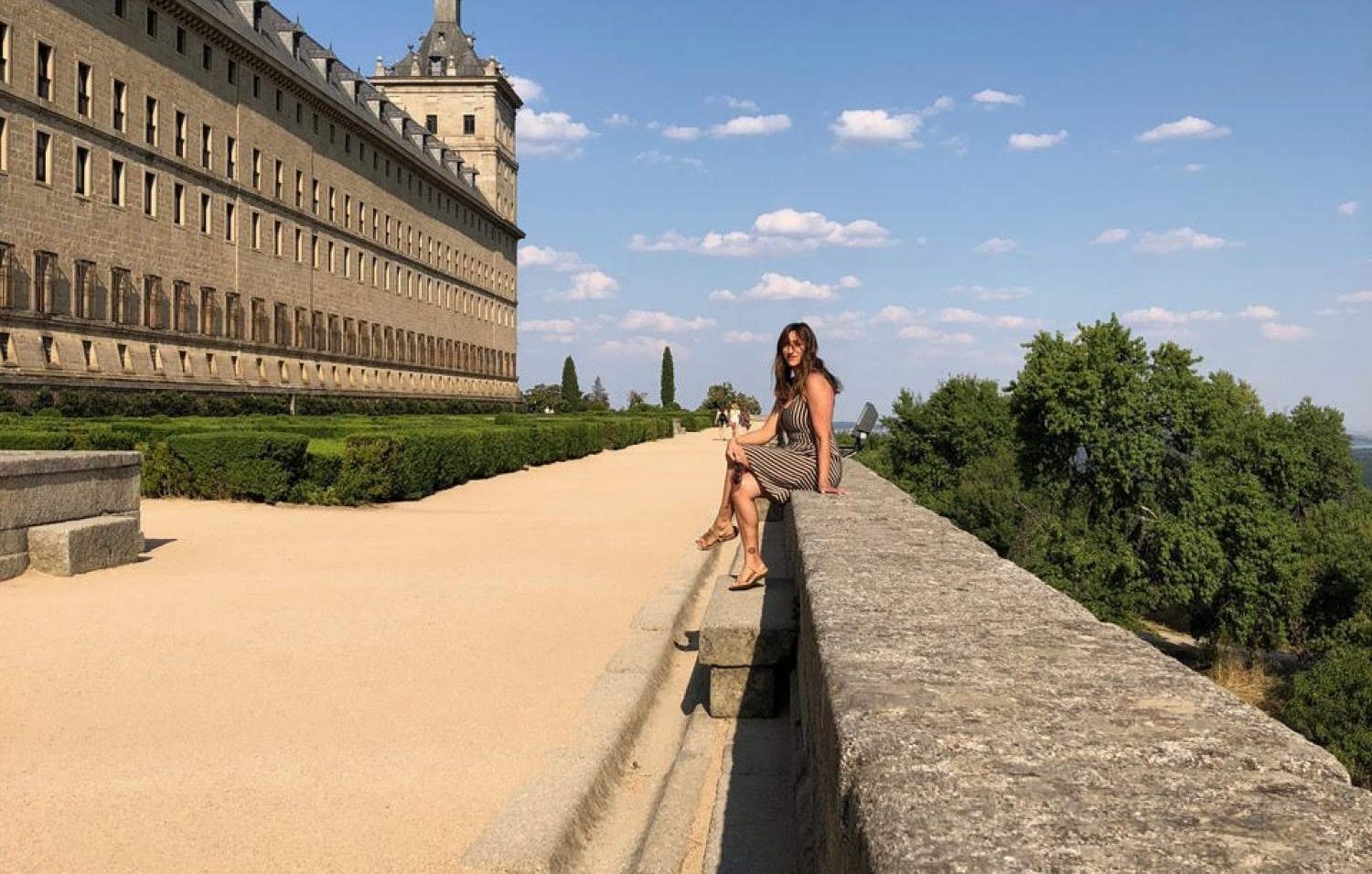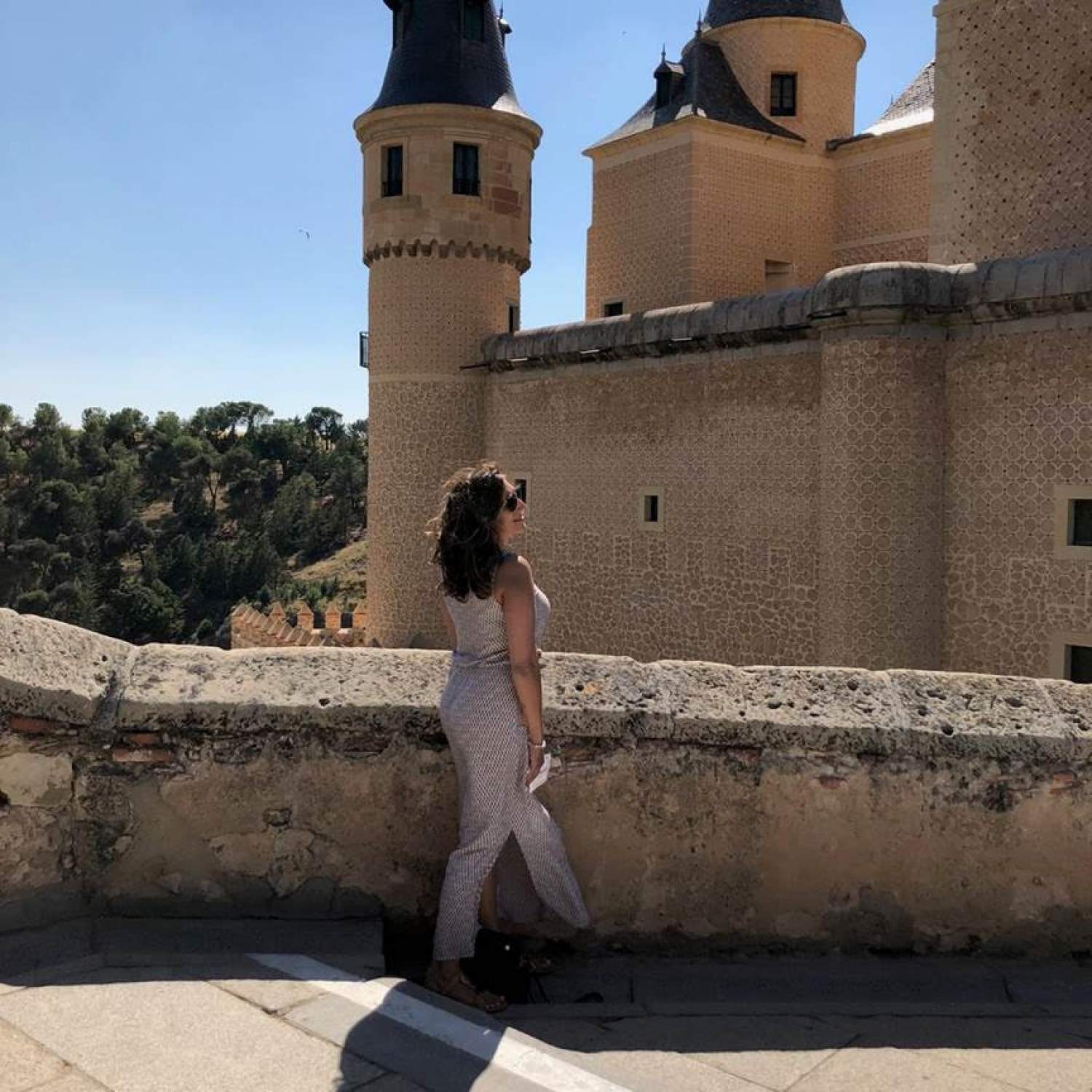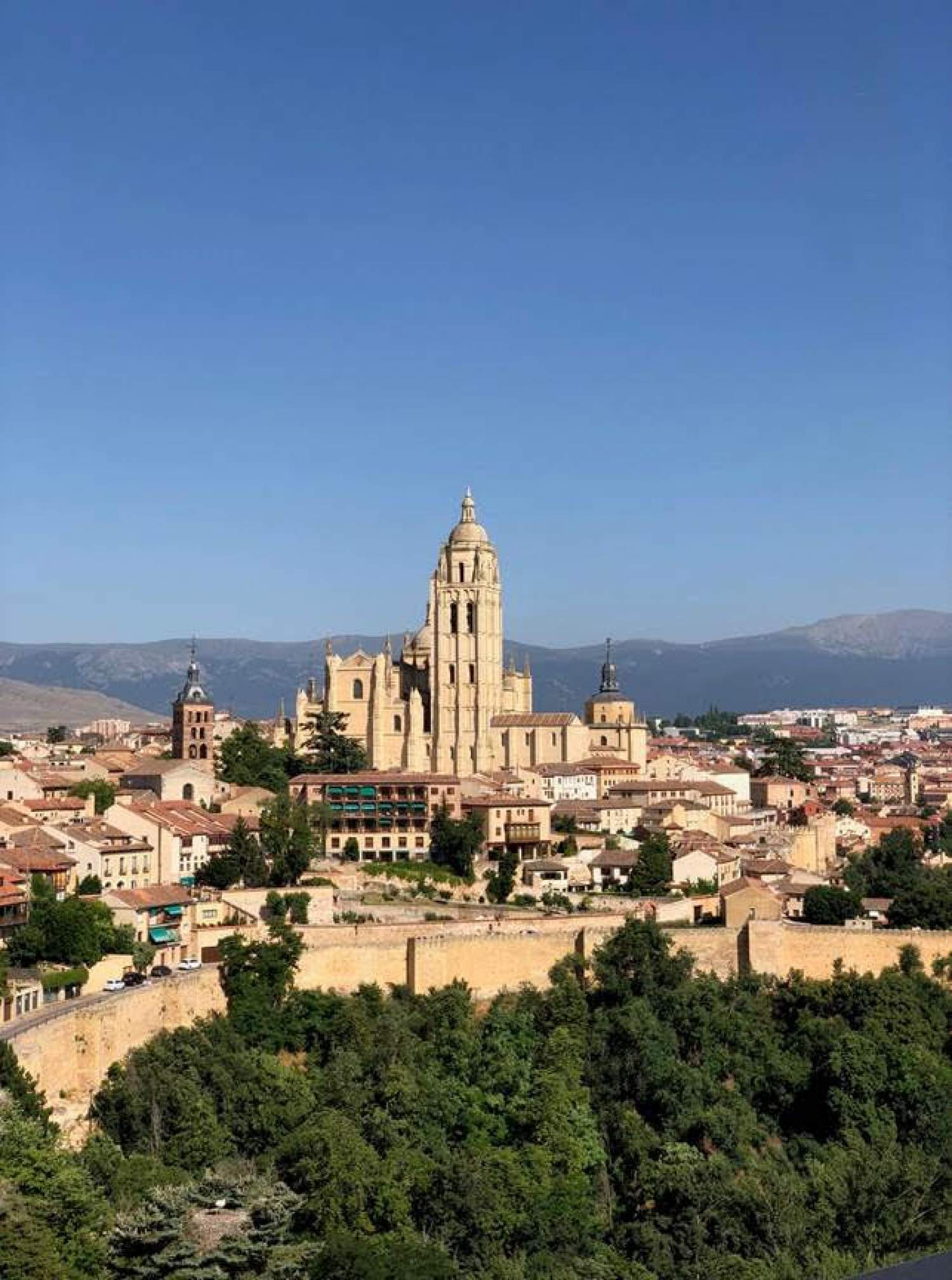Trips have been a huge part of my life since I was just a little girl. They have opened my mind and broadened my horizons in the most tremendous of ways. Hence, one of my dearest dreams was to transmit my love of traveling to my daughter. I waited until she was twelve years old before taking her on a mini-tour of Europe, so that she would be able to pack in as many memories as possible from the Old Continent. Our journey begins around Madrid, more precisely in the historical towns of Toledo, San
Lorenzo and Segovia, all accessible within a one hour drive from the Spanish capital.
TOLEDO
After an initial day of quiet and rest to help my daughter (and myself) recover from the jet lag, our first destination is the beautiful town of Toledo. It was founded by the Romans in 192 BC at the top of a mountain, a very strategic emplacement for a conquest-driven people. The town offers historical treasures from many different eras and is a real delight for the eyes and the spirit.

We arrive by a sinuous road, winding in between hills, which provides us with an impressive overall view of the town. We feel immediately transported to the Middle Age. The sun is burning, there is no humidity, it is a dry heat of 42 degrees Celsius which requires hats and an abundant covering of sunscreen.
There is no time for roasting too much under the sun, we have so many monuments to visit! But first, we’re hungry. There are many terraces to pick from but many of them offer a similar touristic type menu. Gazpacho, ham, etc… maybe a bit overrated for the price they charge. However, there are nice little water-misting jets refreshing us from under the umbrella, which make it worth sitting down and waiting for the slow table service to arrive instead of gobbling a sandwich on the street.
We then walk to the Alcazar, a huge structure dating back to the 3d century. It was first used by the Romans, abandoned and then renovated during the 16 th Century by Charles the 1 st and his son Philip the 2 nd . Abandoned again afterwards, the Alcazar had then been transformed into a military Academy during the 18 th Century, destroyed by a fire in 1886, renovated again and then almost completely destroyed in 1936 after a 2-month siege during the Spanish Civil War.
Today, the building hosts the library of Castilla-La Mancha and the Military Museum. In mid-July, there are not too many people, and the palace is all ours, making the visit even more pleasant. We climb up to a gigantic empty terrace on top of the Alcazar, from where we have a 180 degree view of the town and the country side. Rivers, hills, castles, the heart of Spain is ours from that height. But my daughter cannot wait to have an ice cream. It is extremely easy to find gelato in Spain and our mission is to eat one a day to find the best possible one. I promise her she’ll get it if we spend a bit of time at the Army museum, which teaches me lots of interesting facts about the military history of Spain, with props, paintings and costumes.
The next stop is the gothic style Cathedral of Santa-Maria-de-Toledo, which began construction in 1226. It is a majestic haven but it scares my daughter a little bit. The religious scenes are painted in obscure colors, with violent depictions, a reflection of the periods the monument has gone through.
The immensity of the building and its darkness, lit mostly by candlelight, gives her goosebumps. We leave somewhat hastily but on my end, I store a mental image with the others I have kept after visiting gothic cathedrals. I’m just amazed at the genius of the architects who conceived them.
Our last monument of the day is the El Transito Synagogue, way smaller and far brighter than the Cathedral. It holds a fascinating history. Erected in 1356, El Transito was converted into a church when the Spanish Jews were exiled under the treaty of the Alhambra in 1492. In 1877, it became a national monument and then a Sepharad museum in 1910. Peaceful and decorated with thousands of inscriptions, El Transito is a place of tranquility and calm, a bit like the Jewish neighborhood that surrounds it. It is definitely our favorite visit of the day.
SAN LORENZO
The following day, the Escorial monastery of San Lorenzo is on the program. Just like Toledo, San Lorenzo is perched above the countryside lands, ensuring its visitors a magnificent sight of the nearby hills and of the horizon beyond. The monastery towers over the town. We see it from afar as we’re driving towards it. During its existence, that palace has served as a monastery, a royal residence, a library, a pantheon, a school and a hospital. It is now a marvelous museum to discover. We can only be impressed by its ancient library filled with mostly philosophy books, by the Habsburg and the Bourbon palaces, Philip II’s apartments, the Kings Court, its chapel and its pantheon where the royal souls rest in peace. I want this day to last weeks, because that’s probably what it would take me to fully discover every piece of the museum.
My daughter prefers the vast gardens, perfectly trimmed, that surround half of the Escorial (the other half is bordered by a giant terrace). They inspire peace and give our minds a break from all of the information we’re still trying to integrate from the museum tour. A breathtaking view, the flowers’ perfumes, the shade provided by the palace’s high walls, endless golden fields of the Spanish countryside… we want time to freeze.

We finish the day in the town’s streets, very pleasant to explore by foot while holding a gelato. Many little plazas are perched on different levels of the hillside town, with stone stairs, nice little coffee shops and bistros where locals and tourists cheer under umbrellas. The beauty of our time in San Lorenzo helps us forget the suffocating heat that seems to take Spain over during the lengthy summer.
SEGOVIA
Our third day will be all about Segovia, another jewel perched on Madrid’s surrounding hills. Three historical monuments are awaiting us: the Roman Aqueduct, the Cathedral and the Castle. We stand between the greatness of the Guadarrama mountains on one side and the plains of Old Castilla on the other. As we enter the city, we pass right beside the Aqueduct. The intelligence of its system and of its architecture is very impressive, as is its height. We then drive to an underground parking area located under the fortified part of town. Segovia is best done by foot. It is an open-sky museum itself.
The Alcazar of Segovia (the castle) is built on a rocky peninsula between the rivers Eresma and Clamores. The first mention of it that was ever found dates back to 1122. It is a medieval fortress in all its splendor: two towers, two indoor yards, a chapel, the noblemen apartment, war artifacts and a terrace on the rock’s point with strategically placed arrow holes.

Kids are usually very fond of middle-age fortresses and my girl seems to appreciate being able to put these images to all the fantasy tales she has been told since she was a toddler. That castle is one of our trip’s highlights.
Before leaving the castle to seek our daily gelato, we walk by the Segovia Cathedral. It is the last cathedral of Gothic style that has ever been built in Spain. Its nickname is “The Lady of Cathedrals” and it suits her perfectly: the building’s white color commands respect and its architecture reminds us of ornate lace. It stands above the city’s biggest plaza, with its hundreds of tourists and locals going to restaurants, or for a coffee, or to a gelato parlour. And of course, this is where we’re headed!

Malasaña
Before furthering our European journey (in the following weeks, my daughter and I will visit London, Paris, Marseille, Cannes, Gourdon, Berne, Gruyère and Fribourg), we spend our last Spanish afternoon in Malasaña, in the center of Madrid. We bought tickets for a Flamenco show that afternoon.
Malasaña is probably the hippest neighborhood in Madrid, with some resemblance to certain Barcelona areas. It is home to the Gay Village, tons of coloured walls, shops, and arts and crafts boutiques. It is easy to get lost in the labyrinth of its small streets when strolling between its churches, the Spanish History Museum, the franchises of big clothing chains of Fuencarral avenue and the multiple apartment buildings.
We find our way to the Teatro Flamenco de Madrid. The show is conceived to offer tourists a guided tour of flamenco culture, twice a day, but it is beautiful and well done. One can admire the passion and richness of the music and dance with artists who give themselves entirely onstage. The traditional costumes are beautiful as well, the stage set is simple but says it all and even if the show only lasts an hour, we leave with the impression of having learned new things about Flamenco.

My daughter and I thoroughly enjoyed our five days in Spain. It was ideal to be based in a friend’s apartment in the small town of Las Rozas, twenty minutes away from downtown. It allowed us to discover four areas that are quite different from each other, even if they do share some similar historic background and traditions.
The advantage of Toledo, San Lorenzo and Segovia is that those towns are perfect for one-day trips, which is ideal when you only get to spend a few days in Spain and want to give your child more than one perspective of the country.
Book your flight with Air Transat and enjoy Madrid right away.
Cover photo credits: Florence Khoriaty Riley
The comments and contributions expressed are assumed only by the author. The recommendations, intentions or opinions expressed are not necessarily those of Transat AT Inc. or its affiliates. See terms of use of the Air Transat website.








